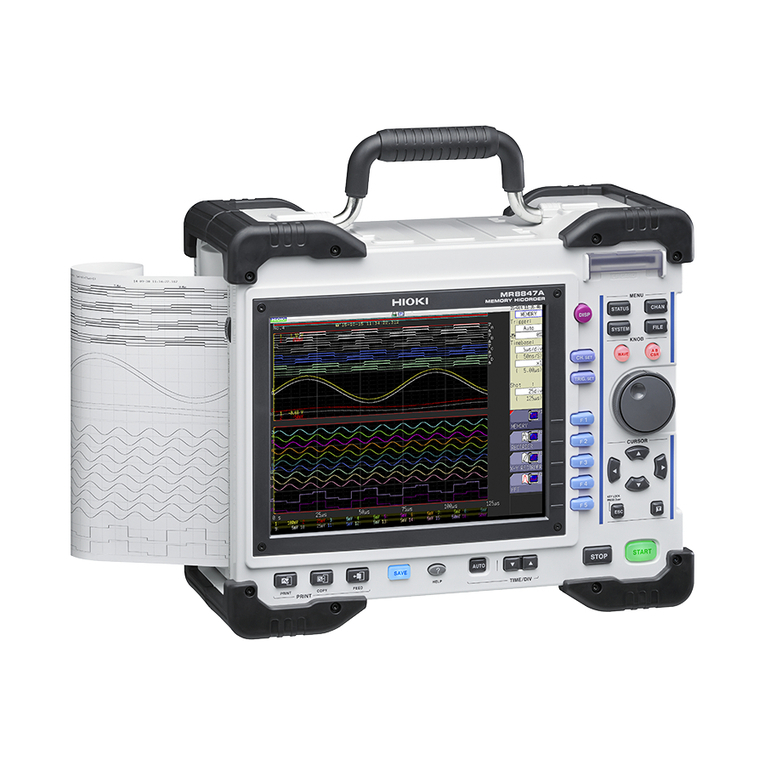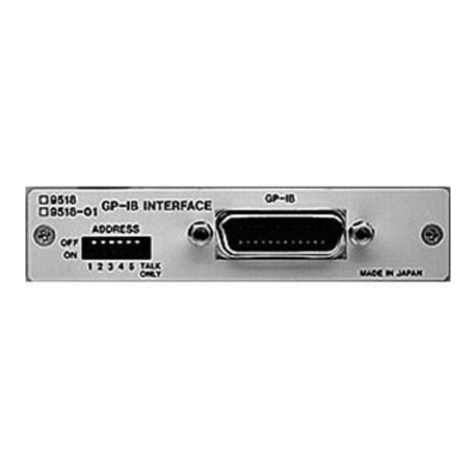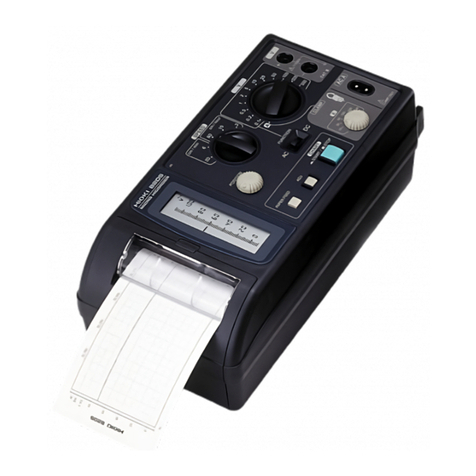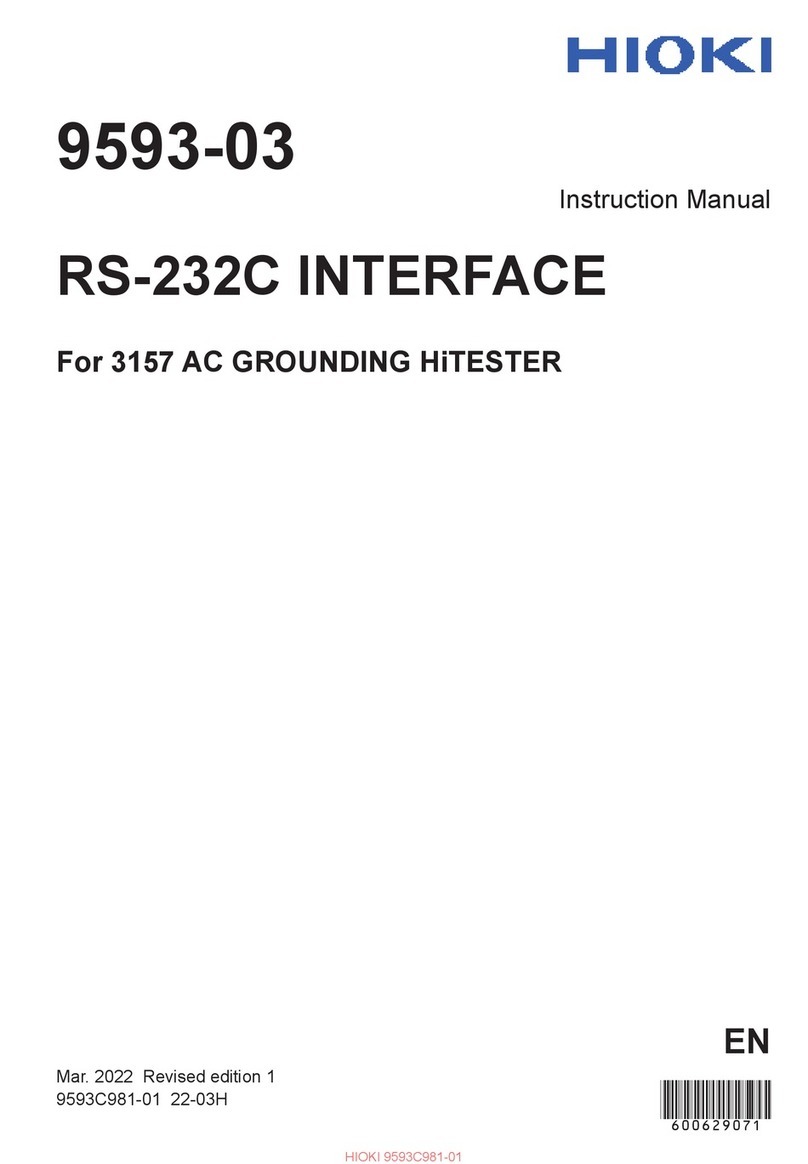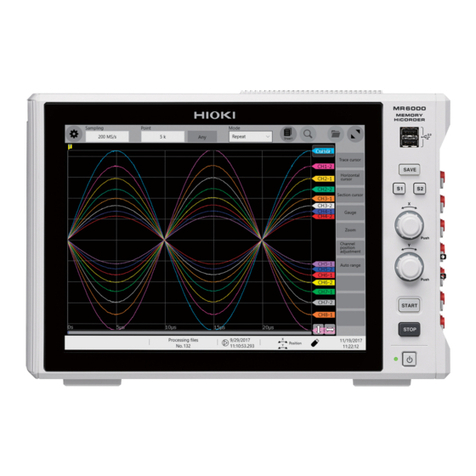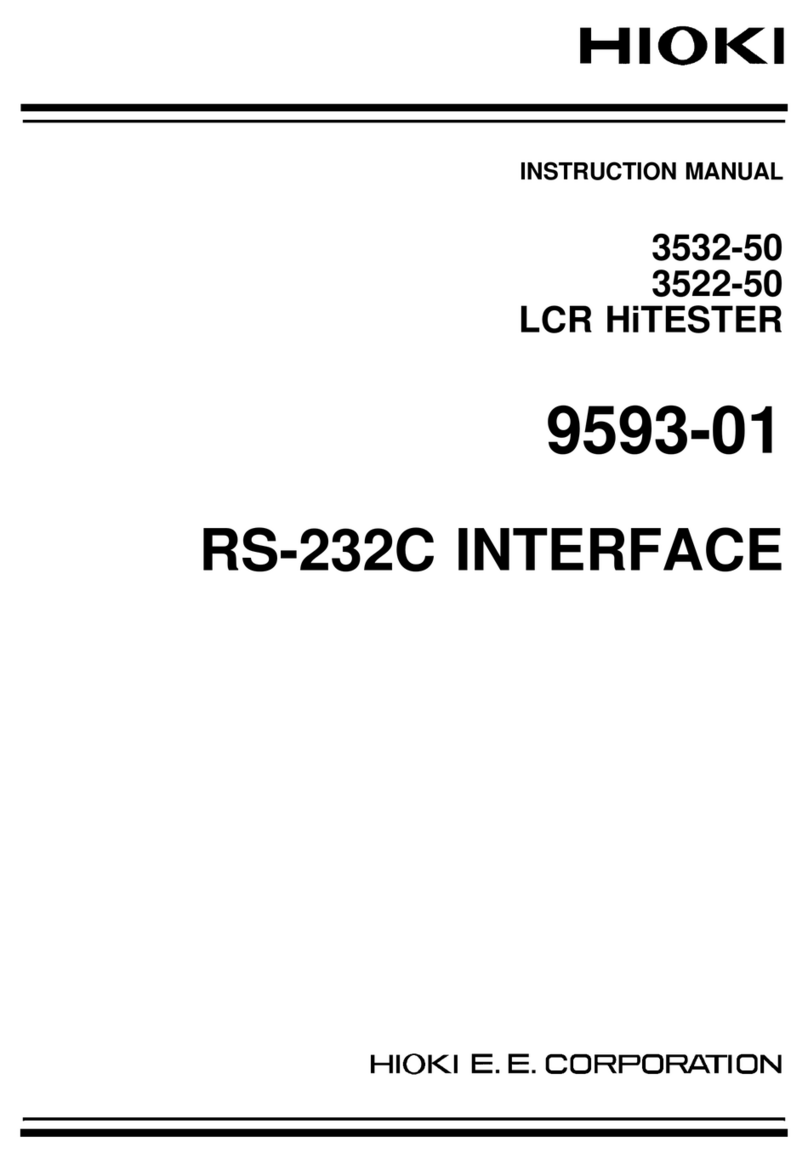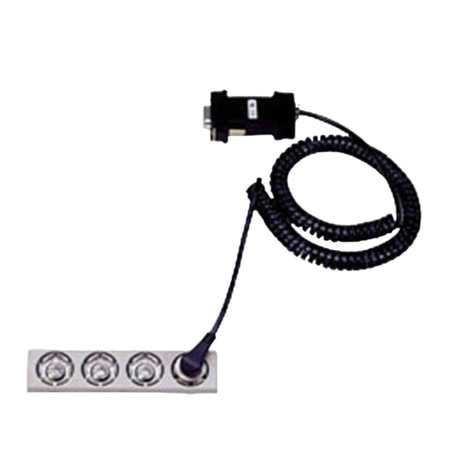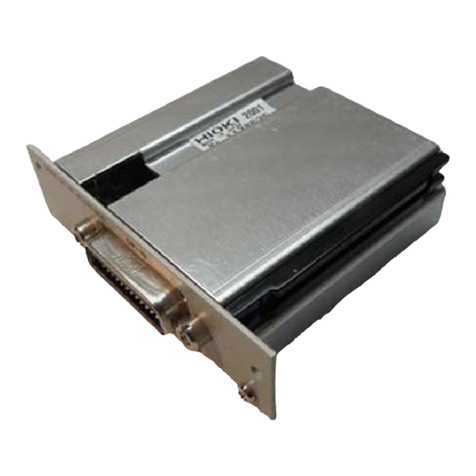
Contents
vi
10.3.6 Saving Settings Data ........................................................... 265
10.3.7 Automatically Saving Waveforms ........................................ 267
10.3.8 Optionally Selecting Waveforms & Saving (SAVE Key) ......270
10.3.9 Automatically Saving Display Images .................................. 272
10.3.10Optionally Selecting Display Screens & Saving (SAVE Key) 274
10.4 Loading Data ..................................................................275
10.4.1 Selecting Files & Folders on Storage Media ........................276
10.4.2 Loading Settings Data ......................................................... 278
10.4.3 Loading Waveform Data ...................................................... 279
10.5 Saving & Loading Auto Settings File
(Auto Setup Function) .....................................................280
10.6 Examples of Saving Data: Reading Data on a PC .........282
10.6.1 Example of Saving Data ...................................................... 282
10.6.2 Reading Waveform Data on a PC ........................................ 286
10.7 Managing Files ...............................................................288
10.7.1 Copying Files & Folders ....................................................... 289
10.7.2 Moving Files & Folders ........................................................ 290
10.7.3 Deleting Files & Folders ....................................................... 291
10.7.4 Renaming Files & Folders ....................................................291
10.7.5 Creating New Folders .......................................................... 292
10.7.6 Sorting Files ......................................................................... 293
10.7.7 Limiting Display of Files ....................................................... 294
10.7.8 Setting the Items to Display ................................................. 295
10.7.9 Printing the File List ............................................................. 296
Chapter 11
Printing __________________________________297
11.1 Printing Workflow ............................................................298
11.2 Print Methods and Print Items ........................................299
11.3 Making Auto Print Settings .............................................301
11.4 Making Manual Print (PRINT Key Output) Settings ........303
11.5 Making Printer Settings ...................................................307
11.5.1 Internal Printer Settings ....................................................... 307
11.5.2 External Printer Settings ...................................................... 309
11.6 Setting the Print Content .................................................311
11.6.1 Common Settings ................................................................ 311
11.6.2 Printing Waveforms .............................................................. 313
11.6.3 Printing Numerical Value Displays ....................................... 318
11.6.4 Making Gauge Settings (When Using External Printer) .......320
11.6.5 Printing Comments and Setting Data ................................... 321
